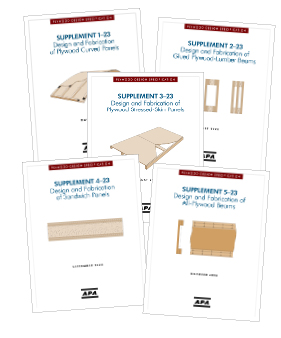Winter 2023

Highlights from this Month's e-Newsletter
Feature
A Carbon Explainer
Emissions and Building Construction
As extreme climate events become more frequent, concern over climate change has grown, and designing buildings to lessen environmental impacts becomes more important. Designers play a crucial role in determining carbon impacts and environmental implications of any project. The first step is understanding the terms and concepts often used in conversations about carbon and the built environment. Here’s a brief explanation.
 Carbon and Building Materials: Biogenic, Embodied, Operational
Carbon and Building Materials: Biogenic, Embodied, Operational
Carbon accounting is the process of calculating overall carbon emissions associated with a project including biogenic, embodied and operational carbon.
Biogenic carbon refers to the carbon sequestered into the building material itself, such as the carbon sequestered into wood during tree growth. Biogenic carbon is released when the material decays or is destroyed. Some materials contain no biogenic carbon; others, like wood, contain considerable amounts.
Embodied carbon is often confused with biogenic carbon, but that is a misconception. It does not refer to carbon sequestration. Instead, it refers to emissions related to construction and building materials.
These embodied emissions encompass all greenhouse gas emissions that arise from the extraction, manufacture, transport, installation, maintenance and disposal of building materials. Emissions from construction activities, like repairs and remodels, are also included in this category, as are emissions from building demolition and disposal.
Operational carbon is a separate category from materials; it refers to carbon emissions during typical habitation and operation of a building, like heating, cooling and powering the building and its various systems. It does not include any repair or remodel activities. These fall within the category of embodied emissions of building materials.
WoodWorks offers a Carbon Calculator to help designers estimate the wood carbon footprint of a project. Simply input the volume of structural wood in a building, and the Carbon Calculator will estimate how much carbon is stored in the wood, greenhouse gas emissions avoided by not using steel or concrete, and the amount of time it takes U.S. and Canadian forests to grow that volume of wood.
Quantifying Carbon Emissions: LCAs and EPDs
Life cycle assessment (LCA) ) is a comprehensive measure of the total environmental impact of an assembly or structure that examines its entire life cycle, start to finish. This assessment often incorporates environmental product declarations (EPDs) of readily available materials like wood products. EPDs, as defined by the International Organization for Standardization (ISO) under ISO 14025, quantify environmental information on the life cycle of a product to enable comparisons between products fulfilling the same function.
The American Wood Council (AWC) has published several EPDs that cover cradle-to-gate carbon emissions for wood products. The values are industry averages that cover the emissions from harvesting, transportation to the mill and manufacturing processes at the mill. Wood products typically result in far less emissions than their competitors for two reasons: first, wood products don’t require drastic changes to the material’s original form, unlike materials that need to be mined and refined.
Second, wood manufacturers often use waste wood, like sawdust, as fuel for powering the manufacturing process instead of fossil fuels, which have a much larger carbon footprint.
The EPDs for North American wood products account for biogenic carbon per ISO 21930, which requires either stable or increasing carbon stock on a national level, or that the forest it originates in is certified for sustainable practices by a third party.
What about Carbon Neutrality and Net Zero… or is it Zero Net?
Carbon neutral describes a project or operation that balances the amount of carbon emissions it generates with an equal amount of carbon sequestration. Net zero, which is sometimes used interchangeably with carbon neutral, may refer to either embodied emissions or operational emissions, depending on context.
To attain carbon neutrality, carbon is quantified in tons of emission versus tons of sequestration. If these are equally balanced, the project is carbon neutral—or perhaps even carbon negative, if tons of sequestration are greater than tons of emission. Carbon neutrality can be accomplished in a number of ways, but often involves planting more trees, investing in reforestation projects and other forms of carbon offsetting. Carbon offset is carbon absorption specifically intended to compensate for carbon emissions in the context of carbon neutrality. Offsets are often purchased as carbon credits (on a one credit per ton sequestered basis) from entities specializing in carbon offsetting.
Net zero, on the other hand, can mean balancing an amount of emissions with the same amount of sequestration, especially when referring to “Net Zero 2050” and other climate goals. But net zero is sometimes interchanged with zero net energy, a term that refers to buildings that have no net power use during operations. Zero net energy buildings often have components that generate power and store it and/or push it back on the grid, compensating for the energy used during operation. For this reason, net zero can be a somewhat confusing term.
Need more help? APA’s engineered wood specialists offer free assistance to construction professionals. CONTACT >
Appendix: Glossary of Carbon Terms and Related Concepts
Biogenic carbon: carbon sequestered from the atmosphere during biomass growth, such as in forests.
Carbon accounting: estimates how much carbon is sequestered into materials versus how much carbon is emitted during material extraction and manufacture, construction and eventual demolition and disposal, as well as emissions during habitation of the building.
Carbon credit: a certificate or permit equal to one ton of greenhouse gas emissions, purchased or traded as a carbon offset.
Carbon footprint: all greenhouse gases emitted by a given entity (e.g., a person, a company, a nation). Carbon footprint is counted by ton of emissions.
Carbon neutral: making no net release of greenhouse gas emissions, usually by compensating for emissions through carbon offsets such as planting trees.
Carbon offset: a deliberate reduction in atmospheric carbon that is intended to compensate for emissions.
Carbon sequestration: the process of removing carbon dioxide from the atmosphere through absorption and storage.
Carbon sink: a material that sequesters carbon dioxide. Globally, the most consequential carbon sinks are oceans, soils, vegetation, forestlands and wilderness, all of which sequester large amounts of atmospheric carbon. Many manmade carbon capture projects, such as injecting deep-sea rocks with carbon dioxide, are being developed, but these are small in scale compared to natural carbon sinks.
Carbon stock: the amount of carbon stored in a system, such as forestlands. North America and Central America have maintained a consistent carbon stock over multiple decades, according to the 2020 Global Forest Resources Assessment.
Cradle-to-gate, cradle-to-completed, cradle-to-grave, cradle-to-cradle: describe various segments of the product life cycle. Cradle-to-gate covers material extraction, transportation to the manufacturing facility and the manufacturing process. Cradle-to-completed covers the cradle-to-gate span plus transportation of materials to building site and construction. Cradle-to-grave covers the entire product life span; easier to quantify with something simple, like an aluminum can, much less so with buildings. Cradle-to-cradle describes a product destined to be recycled into a new product at the end of its life span, ideally leaving no waste. Also see life cycle.
Embodied carbon or embodied emissions: greenhouse gas emissions that arise from the extraction, manufacture, transport, installation, maintenance and disposal of building materials.
Environmental product declaration (EPD): these quantify environmental information on the life cycle of a product or material.
Life cycle assessment (LCA): sometimes called life cycle analysis, an LCA is a comprehensive examination of the environmental impacts of a material, process or service over its entire life span.
Life cycle or product life cycle: the entire life cycle of a product, through material extraction, manufacture, distribution, use and eventual destruction and disposal.
Net zero: producing no net greenhouse emissions or having zero net energy consumption. See Net zero energy building.
Net zero energy building: a structure that has no net energy consumption. Not a measure of carbon emissions.
Operational carbon: emissions produced as a result of habitation, such as heating, cooling and power.
Zero energy, zero net energy (ZNE), Zero net energy building (ZNEB): see Net zero energy building.
Ready for more? Watch our on-demand webinar, Sustainable Structures Built with Engineered Wood. This program looks at sustainability in the construction industry and the role of wood construction, specifically, designing with engineered wood products. Participants will learn best practices to improve design, specification and installation of sustainable solutions using engineered wood systems. CEUs available.
Getting Technical
 Revised Plywood Design Specification Supplements
Revised Plywood Design Specification Supplements
Get updated plywood design guidance! APA’s Resource Library includes five Plywood Design Specification Supplements that were recently revised. Each supplement includes the recommended method for designing and fabricating the respective beam or panel category. Design examples are included.
Inside the Circle
 Meet Matthew Brown
Meet Matthew Brown
Matt joined APA in 2014 as an engineered wood specialist, where he has served the Midwest region for the last ten years as a valued member of the Field Services team. We are pleased to now introduce him as APA’s new director of energy policy and code. In this role, Matt serves as a key advisor and advocate for APA and its members on energy, code and sustainability policy issues. He spearheads the development and implementation of strategic energy and sustainability initiatives, coordinating with internal and external stakeholders on behalf of the industry. He helps educate the public and policymakers on how to leverage engineered wood's natural R-value and low embodied carbon properties. Matt’s career in the construction industry began over 15 years ago, where he worked for a large regional production builder and an energy rating and engineering firm. In his free time, Matt enjoys cooking barbecue for anyone willing to eat it.
CONTACT >
 Join Our Team
Join Our Team
Looking for an exciting new career for the new year? APA is currently hiring for multiple technical positions. APA is a great place to work and grow. As a matter of fact, the average length of service for an APA employee is more than ten years. Learn more and browse current job openings.
GO >
Archived Newsletters
Fall 2023 GO >
Summer 2023 GO >
Spring 2023 GO >
Fall 2022 GO >
Spring 2022 GO >
Winter 2022 GO >
Autumn 2021 GO >
Summer 2021 GO >
Spring 2021 GO >
Winter 2021 GO >
Autumn 2020 GO >
Summer 2020 GO >
Spring 2020 GO >